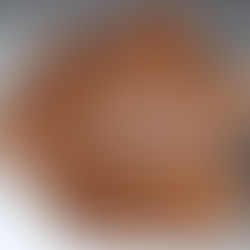An Unexpected Birch Burl
A local logger brought me a beautiful birch burl a few weeks ago. I paid him well for it. It is good to help people in our rural community since many are struggling with the Corona virus shutting down work. The burl is about 24" long and 16" wide at its maximum, a perfect size. Here are a few photos of the burl.


The burl wraps nearly all the way around the 8" diameter log so I decided to cut it in half along the blue line (in the second image). This gave two halves that hopefully will work for end grain turning. The next image shows the two freshly cut halves.

Both halves appear solid with interesting colorful patterns. There is also some chatoyance in the lighter areas. I selected the piece on the right to turn first. The following images show the turning of this piece.
The first image above shows the log and the burl that wrapped nearly all the way around it. The second image shows the other side of the piece. This first burl piece was secured to my Stubby 1000 lathe using a 4" face plate and a live center tail stock. I always use the tail stock for safety while turning a large bowl's profile. Burls often have hidden decay and can fly apart so best to be cautious. I turned a 4.5" tenon which is shown in the last image where a chuck is securing the bowl to the lathe. I used a live center in the tail stock during the initial stages of hollowing the bowl for safety purposes. This bowl measures 15" in diameter and 6" deep. The next four images show the turning of the second half of the burl. This bowl measures 16" in diameter and 7" deep.
The turning of both burl halves went smoothly without any major issues. There was some decay in the second piece, but it was inside the hollowed out area. Both bowls have nice colorful patterns and chatoyance in the lighter areas. The chatoyance will pop out during the finishing process. This burl was freshly cut so the bowls will take at least 2 months to dry under controlled temperature and humidity (approx 63 deg F and 60 - 65% relative humidity). I will monitor them closely to prevent and minimize cracking. I use a drop of thin CA glue as soon as a tiny crack appears. This usually stops the crack from growing. In more serious cases, I use wood dust and CA glue to fill/stop a crack. The bowls will also warp which I like. That natural movement adds an interesting twist to a bowl. I also monitor the weight of each bowl as it dries so I can tell when moisture loss stops. I use a jamb chuck on the lathe to re-turn the outer bottom part of a bowl once it is dry. This is necessary to remove warping in the base and to give a stable proper base for the bowl. These bowls will be sanded to 600 grit (I use Merka Abranet sanding disks) and finally sealed with pure tung oil (50:50 mix with citrus solvent from the Real Milk Paint Co.), and dried for a few days. I often do two applications of tung oil, especially with porous wood. I next wipe on a thin coat of beeswax in walnut oil (ca.15% solution), dry of at least two days, and buff with lamb's wool. Sorry to include so much detail, but people always ask me about drying and finishing.



































